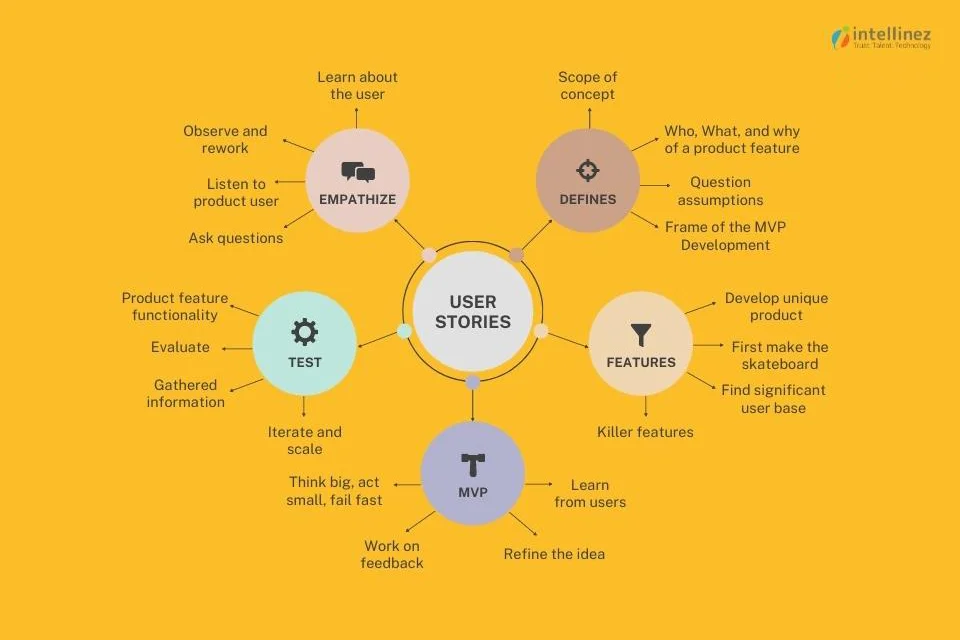An Introduction to ElasticSearch
Chapter 1: Introduction to ElasticSearch
What is ElasticSearch?
Elasticsearch, in its essence, can be described as an index, an analytical database or an ecosystem of components utilized for an increasing range of use cases, ranging from a simple website or document search to collecting and analyzing log data for in-depth data analysis and visualization. But with so many buzzwords crammed into the first line of its description, one wonders what does it actually do? The answer is that all of these responses are valid, which is part of Elasticsearch’s attractiveness.
Elasticsearch is a Java-based, distributed, open-source, highly scalable, full-text search and analytics engine enabling its users to store, explore, and analyze enormous amounts of data in near real-time with results arriving in milliseconds. Elasticsearch uses a JSON-based REST API to refer to a distributed system on top of Lucene StandardAnalyzer for indexing and automatic type guessing. It is able to produce quick search results because it searches an index rather than searching the text directly.
It is based on a document-based structure rather than tables and schemas with an extensive list of REST APIs for storing and searching data. Elasticsearch can be thought of as a server that can process JSON requests and return JSON data at its core.
Elasticsearch receives raw data from a variety of sources, such as logs, system metrics, and web applications. Users can conduct complex searches against their data and use aggregations to receive elaborate summaries of their data once it has been indexed in Elasticsearch. Users may utilize Kibana to generate rich data visualizations, share dashboards, and manage the Elastic Stack.
Chapter 2: Introduction to ElasticSearch
Features of ElasticSearch?
Elasticsearch boasts a huge number of functionalities and built-in features that make data rollups and index lifecycle management highly scalable, fast, and resilient.
Real-Time Search
Elasticsearch is a lightning-fast search engine. Elasticsearch excels at full-text search because it is built on top of Lucene. Elasticsearch is also a near-real-time search technology, which means that the time it takes for a document to be indexed and searchable is often less than one second. As a result, Elasticsearch is ideal for time-sensitive applications like security analytics and infrastructure monitoring.
Distributed & Scalable
By its very nature, Elasticsearch is distributed. Elasticsearch documents are kept in many containers known as shards, which are copied to offer redundant copies of the data in the event of hardware failure. Elasticsearch’s distributed structure enables it to scale to hundreds (or thousands) of servers and handle petabytes of data.
The Elastic Stack
Data ingest, visualization, and reporting are all made easier using the Elastic Stack. It’s simple to handle data before indexing it in Elasticsearch, thanks to the integration with Beats and Logstash. Kibana, meanwhile, provides real-time visualization of Elasticsearch data as well as user interfaces for easily obtaining APM, logs, and infrastructure metrics data.
NoSQL Based artitechture
Businesses are always on the hunt for better ways to store and retrieve data. This can be accomplished by using NoSQL instead of RDBMS to store data. One such NoSQL distributed database is Elasticsearch. To address the demanding workload and low latency required for real-time engagement, Elasticsearch uses flexible data models to generate and update visitor profiles.
Chapter 3: Introduction to ElasticSearch
Concepts behind Elasticsearch
Documents
Documents are the simplest type of data that may be indexed in Elasticsearch and are expressed in JSON, the universal internet data interchange format. A document acts in the same way a row does in a relational database and represents a specific object. A document in Elasticsearch can be anything structured data encoded in JSON, not only text. Numbers, strings, and dates are examples of such data. Each document has a distinct ID and a data type that identifies what type of object it is.
Index
An index is a grouping of papers with comparable qualities. In the world of Elasticsearch, an index is the highest entity that you can query. Consider the index to be analogous to a database in a relational database schema. An index’s documents are usually logically related. For example, on an e-commerce website, you may have an index for Customers, one for Products, one for Orders, and so on.
Inverted Index
In Elasticsearch, an index is actually an inverted index, which is the technique by which all search engines operate. In simples terms, it is a data structure that stores a mapping between content, such as words or integers, and their places in a document or series of documents. It is essentially a hashmap-like data structure that guides you from a word to a document.
An inverted index does not store strings directly but rather divides each document into individual search terms (i.e., each word) and then maps each search term to the documents in which those search terms appear. For example, the phrase “best” appears in document 2 in the image below, so it is mapped to that document. This provides a quick reference on where to discover search terms in a particular document. Elasticsearch swiftly identifies the best results for full-text searches from even very huge data sets by leveraging distributed inverted indices.
Shards
When you break down the index into several sections, they divide into multiple components known as shards. Each shard is a fully functional and self-contained “index” that can be hosted on any node in a cluster. Elasticsearch can assure redundancy by dividing the pages in an index across many shards and those shards across different nodes. This protects against hardware failures while also increasing query capacity when nodes are added to a cluster.
Replicas
With Elasticsearch, you can create one or more duplicates of your index’s shards, known as “replica shards” or simply “replicas.” A replica shard is essentially a duplicate of a primary shard. Each document in an index is assigned to a single primary shard. Replicas make redundant copies of your data to safeguard against hardware failure and to boost capacity for serving read requests such as searching for or retrieving a document.
Backend Components
-
Cluster
A cluster in elasticsearch is a collection of one or more connected node instances. The power of an Elasticsearch cluster rests in the spread of tasks, searching, and indexing among all cluster nodes.
-
Node
A singular server which is the part of a cluster, is referred to as a node. A node holds data and contributes to the indexing and search capabilities of the cluster. Elasticsearch nodes can be set in a variety of ways.
-
Master Node
In elasticsearch, the master node is in charge of the Elasticsearch cluster and all the cluster-wide activities such as creating/deleting indexes and adding/removing nodes.
-
Data Node
A node in elasticsearch stores data and performs data-related actions such as searching and aggregation.
-
Client Node
A client node sends cluster requests to the master node and data requests to data nodes.
Chapter 4: Introduction to ElasticSearch
The Elastic Stack (ELK)
The Elastic stack is also known as the “ELK” stack, after its components Elasticsearch, Logstash, and Kibana and Beats. Although Elasticsearch was primarily designed to be a search engine, customers began utilizing it to log data and needed a means to efficiently ingest and view that data. Here the Elastic Stack comes into the limelight as a collection of open-source technologies for data analysis, ingestion, enrichment, storage, and visualization.
Kibana
Kibana is an Elasticsearch data visualization and management tool. It displays pie charts, line graphs, histograms, and maps in real-time. Kibana may also be used to display Elasticsearch data and navigate the ELK Stack. Furthermore, Kibana allows you to customize how your data is shaped.
Logstash
The primary purpose of logstash is to aggregate and process data before sending it to Elasticsearch. It acts as an open-source server-side data processing pipeline. It collects data from multiple sources at the same time and assists you in forming the appropriate data collection.
Beats
Beats (the most recent addition to the ELK Stack) is a set of lightweight, single-purpose data shipping agents. You can utilize Beats to transmit data to Logstash from various (hundreds/thousands) devices and systems. Because of its versatility, Beats are an excellent choice for data collection.
Chapter 5: Introduction to ElasticSearch
Use Cases for ElasticSearch
So far, we’ve figured out how to answer the question, “What is Elasticsearch?” as well as the fundamental concepts of Elasticsearch. It’s also crucial to understand when to use Elasticsearch. Let’s have an in-depth look into Elasticsearch’s use cases:
Textual Search (pure text search)
Elasticsearch is most commonly used when there is a lot of text, and we want to search all data for the best match with a certain term. Elasticsearch is used to speed up product searches by allowing users to search by properties and name (textual search and structured data).
Data Aggregation
The framework for data aggregation aids in the provision of aggregated data based on a search query. It is built on aggregations, which are simple building pieces that may be used to create complicated data summaries. An aggregation is a unit of work that creates analytic information from a collection of documents. The context of the execution determines what this document set is (for example, a top-level aggregate runs inside the context of the search request’s executed query/filters).
Auto-Suggest & Complete
This feature allows users to begin entering a few characters and obtain a list of suggested questions as they type. Based on past searches, the Elasticsearch database assists in auto-completing the search query by filling in a search field with partially written terms.
TL;DR
Elasticsearch is a Java-based, distributed, open-source, highly scalable, full-text search and analytics engine enabling its users to store, explore, and analyze enormous amounts of data in near real-time with results arriving in milliseconds. Elasticsearch boasts varying uses across industries and domains such as an indexing engine, an analytical database and ecosystems of data analysis and visualization tools.
Software Development Services
With Our expertise in Software Development, we can create Custom and Enterprise solutions for multiple platforms ranging from web and mobile to the cloud. We also specialize in SaaS Development, UI/UX services, QA Testing, System Integration and API Development.

















![A Comprehensive Guide to AWS SaaS Architecture [Diagram Included] 29 Aws SaaS Architecture](https://www.intellinez.com/wp-content/uploads/2024/08/Title-image.jpg)





























































































